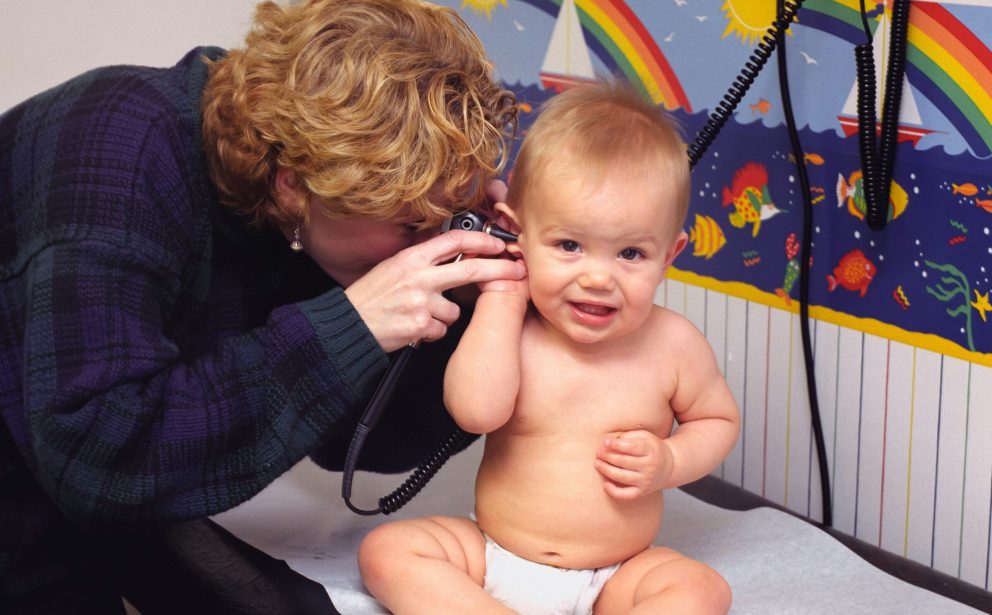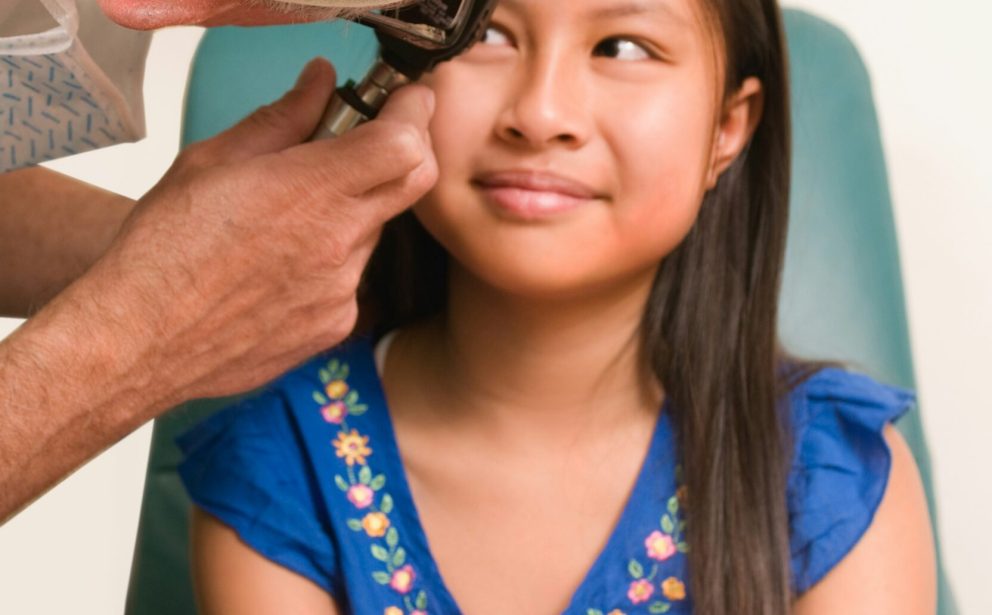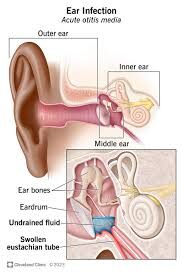Parent's Guide to Childhood Ear Infections
I never thought I’d become an expert on ear infections. But here I am, 3 kids and roughly 2,437 sleepless nights later, basically qualified for an honorary medical degree in Pediatric Otology. Or at least that’s what I tell myself at 2 AM when I’m googling “why does my toddler keep grabbing his ear and screaming.”
If you’ve landed on this article, chances are you’re either currently dealing with a cranky, ear-tugging kiddo or you’ve been through the ear infection rodeo before and are desperately seeking ways to avoid another round. Either way, pull up a chair (or more likely, continue hiding in the bathroom for 5 minutes of peace while reading this on your phone). Let’s talk ear gunk.
Why Kids? Why Now? Why ALWAYS at 2 AM??
My son Tyler had his first ear infection at 8 months old. I knew something was up when he refused his favorite bedtime story and kept rolling to one side. By midnight, the ear-pulling started, and by 1 AM, we were both crying—him from pain, me from helplessness.
But why do these infections seem to target kids specifically? And with such terrible timing?
Truth bomb: it’s mostly about plumbing.
Kids’ ear canals are basically designed to trap fluid. Their eustachian tubes (the drainage pipes connecting the middle ear to the throat) are:
- Shorter and more horizontal than adults’
- More likely to get blocked when they have a cold
- Absolute paradise for bacteria looking for a warm, moist vacation home
Add in daycare (aka the germ exchange program) and immune systems that are still figuring things out, and you’ve got the perfect storm.
My daughter’s preschool teacher once told me, “Runny noses are just enrollment fees in disguise.” She wasn’t wrong. Each cold brings a 30% chance of an ear infection tagging along for the ride.

Is This an Ear Infection or Just Regular Toddler Madness?”
This is the million-dollar question, isn’t it? Kids cry and get fussy for approximately 7,382 reasons daily. How do you know when it’s ears?
Here’s my hard-earned checklist (developed over many unnecessary and several very necessary pediatrician visits):
- Ear tugging that seems different from normal exploration
- Fussiness that gets worse when lying down (gravity + fluid = extra pain)
- Trouble sleeping (beyond the usual “I need water/another story/to tell you about dinosaurs”)
- Fever, especially after a cold has “almost” gone away
- Reduced interest in eating (because swallowing hurts their ears—who knew?)
- That glazed, sick-kid look that parents can somehow recognize instantly
- Saying “ow” and pointing to their ear (thank goodness when they’re old enough for this one)
My personal red flag? When my normally bouncy 3-year-old wants to be held ALL DAY LONG. That’s when I know something’s up.
The One Where I Became an Amateur Ear Doctor
After Tyler’s fifth ear infection, I started noticing patterns. His infections almost always followed a cold, especially ones where he had thick, green snot (sorry for the visual, but us parents are way past being grossed out, right?).
I also noticed that his daycare buddies would start the infection train—one kid would get it, then another, then boom—Tyler’s tugging his ear again.
So what exactly is happening in there?
When fluid gets trapped behind the eardrum (usually after a cold), bacteria throw a party in that warm, moist space. The resulting inflammation causes the pain, and sometimes fever or temporary hearing issues.
There are actually different types:
Acute Otitis Media (AOM): The painful one with actual infection. This is what had me driving to urgent care in my pajamas that memorable Tuesday night.
Otitis Media with Effusion (OME): After the infection clears but fluid sticks around, like that houseguest who doesn’t get the hint. This can last for weeks and might affect hearing temporarily.
Chronic Otitis Media: When your pediatrician knows your kid’s name and medical history without looking at the chart because you’re there EVERY. OTHER. WEEK.
“Should I Call the Doctor or Just Open a Bottle of Wine?”
Both valid options at 9 PM with a screaming toddler, honestly. But here’s when you actually need medical attention:
Call Today:
- Your child is pulling at their ears AND has a fever over 102°F
- Symptoms include severe pain, with crying that won’t stop
- Your parental spidey-sense is tingling hard
- Your child is under 6 months with ANY ear symptoms
It’s Probably OK to Wait:
- Mild discomfort, no fever
- Child over 2 years with good overall health
- Symptoms under 48 hours
Our pediatrician (bless her patient soul) told me something that changed my approach: “About 80% of ear infections in kids over 2 will clear up without antibiotics.”
Wait, what? After rushing in for immediate amoxicillin multiple times?
Turns out, the “watch and wait” approach is becoming more common, especially with antibiotic resistance concerns. For kids over 2 with mild symptoms, many doctors now recommend pain management for 48-72 hours before considering antibiotics.
That said, trust your gut. You know your kid better than any article, including this one.
Surviving Until the Doctor’s Office Opens
It’s currently 3:17 AM. Your child is finally asleep after two hours of crying. The doctor’s office opens at 8:00. How do you get through the night?
These are my battlefield-tested strategies:
For Pain Relief:
- Children’s acetaminophen or ibuprofen (follow dosage guidelines religiously)
- Warm (not hot) compress against the ear
- Elevation—extra pillow or slightly raised mattress end
- Distraction (yes, 3 AM iPad time is 100% justified here)
Things I’ve Tried When Desperate:
- Warm olive oil drops in the ear (check with your doctor first)
- White noise machine cranked to “tropical rainforest” level
- Holding my son upright on my chest while sleeping sitting up
- Driving around the neighborhood at 4 AM (the car motion sometimes helps)
The warm compress was honestly our MVP—just a washcloth with warm water pressed gently against Tyler’s ear would often calm him enough to sleep.

When Will These Ear Infections Stop Running My Life?”
If you’re dealing with recurring infections (we hit seven in one year with Tyler), you might be wondering if this is your life now. Forever. Will you be calling out of work for ear infections when your kid is in college?
Good news—most kids outgrow ear infections as their eustachian tubes develop. The peak age is 6 months to 2 years, with things typically improving after age 4.
But if infections keep coming back like bad pennies, it might be time to discuss ear tubes with your doctor.
The Tubes Decision: Our Game-Changer
After Tyler’s seventh infection in 8 months, our pediatrician referred us to an ENT specialist. The recommendation: ear tubes.
I panicked initially—surgery? On my baby? But here’s what I learned:
- The procedure takes about 15 minutes
- It’s done under brief anesthesia
- Recovery is typically super quick
- The tubes usually fall out naturally after 6-18 months
For us, it was life-changing. Tyler went from constant infections to zero in the year following tubes. No more middle-of-the-night screaming, no more missed work days, no more worried sick-kid looks.
The tubes create a tiny airway through the eardrum, allowing fluid to drain properly instead of getting trapped. Simple but brilliant.
Prevention: Because Ain’t Nobody Got Time for This
Can you actually prevent ear infections? Sort of. Maybe. Sometimes.
The honest answer is you can reduce the risk, but kids being kids (and germs being germs), there’s no foolproof method. Still, these strategies helped us cut down on frequency:
Everyday Habits:
- Hand washing like you’re prepping for surgery
- Teaching kids not to share drinks/food
- Breastfeeding if possible (it really does boost immunity)
- Keeping vaccinations updated, including annual flu shots
- Avoiding exposure to cigarette smoke
When They Have a Cold:
- Saline nasal spray and gentle suctioning to clear congestion
- Elevating the head end of the bed slightly
- Keeping them hydrated (thinner mucus drains better)
My personal weird tip that seems to work: during bath time, I’m super careful not to get water in their ears. I’ve noticed a pattern of ear infections following baths where water sneaks in.
Long-Term Effects: Should I Worry?
As parents, we’re professional worriers. When Tyler kept getting infections, I started spiraling about permanent hearing damage, speech delays, and whether he’d ever be able to use those expensive wireless earbuds I wanted to get him for his 16th birthday.
Here’s the reassuring reality:
- Most ear infections, even recurring ones, don’t cause permanent hearing loss
- Temporary hearing reduction during infections is common but typically resolves
- Speech delays are possible with chronic untreated infections, but not inevitable
If you’re concerned about development, don’t hesitate to mention it to your doctor. Early intervention makes a huge difference when it is needed.
Tyler had some minor speech delays that resolved quickly after tubes. His preschool teacher was actually the one who noticed his language explosion about two weeks post-procedure.
Bottom Line: You’ve Got This
If I could teleport back in time and tell my panicked, first-time-mom self anything about ear infections, it would be:
- This is incredibly common and rarely serious
- Trust your instincts about when to seek help
- Relief strategies matter as much as medical treatment
- It’s temporary, even when it feels endless
Ear infections are basically a childhood rite of passage—uncomfortable, inconvenient, and sometimes scary, but ultimately manageable.
Now if you’ll excuse me, I hear suspicious crying from the toddler’s room, and I’m pretty sure I recognize that particular ear-tugging wail. Time to put my honorary ear infection degree back to work.
Send coffee. And maybe reinforcements.

